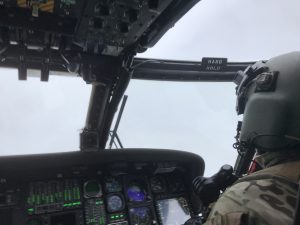Signup at the bottom of this article.

The European Gypsy Moth is an invasive insect that has established itself in North America, feeding on the leaves of more than 300 different species of trees. In the last few years in Southern Ontario, the Gypsy Moths have caused havoc, defoliating large forests and homeowners trees alike. Most trees will have enough energy to withstand the attacks and regrow its leaves a couple of weeks later, however during the time the tree is defoliated it can be vulnerable to other predators and/or disease. During the early life of the Gypsy Moths when they exist as small caterpillars, they begin feeding on the leaves of trees. As they grow bigger in size, so does their appetite. Depending on the density of caterpillars, they can collectively consume enough leaves to leave an entire forest completely bare.
So what can we do about it?
Some of the methods used to control the damage caused by the moths are:
-Double sided tape placed at the base of the tree can prevent the caterpillars from climbing up the tree
-Burlap bag placed around the base of the tree to catch caterpillars looking for a place to rest
-Aerial Application of Btk Insecticide


What is Btk Insecticide?
BT which is short for Bacillus thuringiensis is a naturally occurring bacteria that is normally found in the soil and on the leaves of plants. Btk is the kurstaki subspecies of BT and produce crystals when the bacteria forms its protective spore. These crystals break down when ingested by the Gypsy Moths, revealing a very specific protein inside. Once inside the gut of the moth, the proteins act as a “key” to which the “lock” is the digestive cells of the moths. Once the digestive cells are cracked open, the moths lose their appetite and eventually die.
The advantage of Btk is that it can only affect species that have the specific lock that the protein key will fit. As a result, Btk targets only the gypsy moth population and is non-toxic for birds, animals, humans, honeybees, fish, and most other insects. (1)
OK, I want to protect my trees and get Btk applied via helicopter. Now what?
See the sequence of events below. The first step is complete the online signup form listed below. Once we receive your application, we will review it to determine if you fall within our service area. If your property is within our service area, we will get in contact with you via email to send you waivers for your neighbors to sign if they have property within 200m to allow the spray operation and postage of public notice signs. If your property does not fall within our service area, we will notify you via email that unfortunately it is not feasible to spray in your area. In either case, you will hear back from us by March 01. If you happen to get rejected, feel free to get in contact with us to discuss what we can do to make it happen on a case by case basis. Once you send us the signed waivers back, we will send you payment details. Once we receive your payment, we will send you another email confirmation that you are on our roster as well as an expected spray date. Please note that we cannot guarantee the accuracy of the estimate as weather and other factors can change the time frame drastically. After your service is confirmed, we will send you a link to our tracker, where you can view any updates to our plan. 2 applications of the product are required 5-10 days apart for maximum effectiveness, and are included in the price.
Sequence of Events
Step 1: Processing of applications, sending confirmations
Step 2: Customers send in their signed waivers from their neighbors within 200m
Step 3: Collect Payment Online (once clients are paid, they are confirmed and will be sent a link to view our current progress and their estimated application date)
Step 4: First Application
Step 5: Second application 5-10 days later
Pricing
$368 base fee includes first acre and administration, $90 per acre thereafter. Price includes both (2) applications and all taxes.
For example, if your spray area is 3.5 acres the price is $368 + $90 x 2.5 = $593. If you have 0.5 acres, you would pay the base price of $368.
To sign up, please visit:
Citations:
(1): Perez, J.; Bond, C.; Buhl, K.; Stone, D. 2015. Bacillus thuringiensis (Bt) General Fact Sheet; National Pesticide Information Center, Oregon State University Extension Services. http://npic.orst.edu/factsheets/btgen.html.
